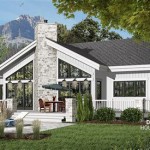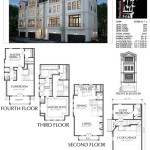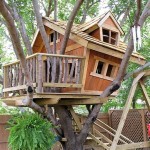Duplex house plans are architectural blueprints designed for constructing residential buildings with two separate living units, each with its entrance and living spaces. These units are often mirrored or symmetrical, sharing a central wall or party wall, and may have separate garages or driveways.
Duplexes are commonly found in urban and suburban areas and are popular among families looking for affordable housing options, first-time homebuyers, or investors looking to generate rental income. They offer the benefits of single-family living while allowing for shared ownership responsibilities and maintenance costs.
In the following sections, we will delve deeper into the advantages and considerations associated with duplex house plans, explore different design options, discuss construction techniques, and provide valuable tips for choosing the right plan for your needs.
Duplex house plans offer numerous advantages, making them a popular choice for a wide range of homeowners. Here are nine important points to consider:
- Affordable housing option
- Ideal for multi-generational living
- Potential for rental income
- Shared ownership responsibilities
- Efficient use of space
- Variety of design options
- Customization possibilities
- Energy efficiency
- Low maintenance costs
These factors make duplex house plans an attractive choice for those seeking affordable, flexible, and low-maintenance housing solutions.
Affordable housing option
Duplex house plans offer an affordable housing option for several reasons:
- Reduced construction costs: Building a duplex is typically more cost-effective than constructing two separate single-family homes. This is because certain costs, such as land acquisition, foundation, and roofing, can be shared between the two units. Additionally, the shared wall eliminates the need for exterior walls on one side of each unit.
- Shared maintenance costs: Duplex owners share responsibility for common areas such as the roof, exterior painting, and landscaping. This can significantly reduce the maintenance expenses for each individual unit compared to owning a single-family home.
- Potential for rental income: Duplexes provide the opportunity to generate rental income from one unit while living in the other. This can help offset mortgage costs and provide a source of passive income.
- Government assistance programs: In some areas, there may be government assistance programs available to first-time homebuyers or low-income families who are interested in purchasing a duplex.
Overall, duplex house plans offer a more affordable housing option compared to single-family homes, making them an attractive choice for those looking to save money on housing costs.
Ideal for multi-generational living
Duplex house plans are an excellent option for multi-generational living, as they provide separate living spaces for different generations of a family while still allowing for close proximity and interaction.
- Separate living quarters: Duplexes offer two separate living units, each with its own bedrooms, bathrooms, kitchen, and living areas. This provides privacy and independence for each generation, allowing them to maintain their own routines and lifestyles.
- Shared common spaces: Many duplex house plans include shared common spaces, such as a backyard, patio, or living room. These spaces provide opportunities for family members to gather, socialize, and spend quality time together.
- Aging-in-place options: Duplexes can be designed to accommodate the needs of aging family members. For example, one unit can be designed with features such as wider doorways, grab bars, and a walk-in shower, making it accessible for individuals with mobility issues.
- Caregiving support: Having family members living in close proximity can provide valuable caregiving support. For example, grandparents can help with childcare, while adult children can assist with tasks such as grocery shopping or home maintenance for elderly parents.
Overall, duplex house plans offer a flexible and functional solution for multi-generational living, allowing families to live together while maintaining their independence and privacy.
Potential for rental income
Duplex house plans offer the potential for rental income, which can provide homeowners with a number of financial benefits.
- Offset mortgage costs: Rental income from one unit can help offset the mortgage costs of the entire duplex. This can make it easier for homeowners to afford their housing expenses and build equity in their property.
- Generate passive income: Rental income can provide a source of passive income for homeowners. This can be especially beneficial for those looking to supplement their retirement savings or generate additional income streams.
- Appreciation potential: Duplexes tend to appreciate in value over time, just like other types of real estate. This means that homeowners can potentially build wealth through rental income and property value appreciation.
- Tax benefits: Rental income is taxable, but homeowners may be able to deduct certain expenses related to the rental property, such as mortgage interest, property taxes, and repairs. This can help reduce the overall tax burden associated with owning a duplex.
Overall, the potential for rental income is a significant advantage of duplex house plans. Homeowners can leverage this income to offset their housing costs, generate passive income, build wealth, and reduce their tax burden.
Shared ownership responsibilities
One of the key advantages of duplex house plans is the shared ownership responsibilities between the two units. This can help reduce the financial burden and workload associated with homeownership.
Typically, shared ownership responsibilities in a duplex include:
- Exterior maintenance: This includes tasks such as roof repairs, exterior painting, and landscaping. The costs and responsibilities for these tasks are typically shared equally between the two units.
- Common areas: Duplexes often have shared common areas, such as a backyard, patio, or driveway. The maintenance and upkeep of these areas are typically shared between the two units.
- Insurance: Both units are typically required to have their own homeowners insurance policies. However, the cost of insurance may be lower for duplexes compared to single-family homes, as the units share some of the same risks.
- Property taxes: Property taxes are typically assessed on the entire duplex, and the cost is divided equally between the two units.
It’s important for duplex owners to establish clear agreements regarding the division of responsibilities and costs. This can help avoid disputes and ensure that both units are properly maintained.
Overall, the shared ownership responsibilities in a duplex house plan can provide significant benefits to homeowners, reducing the financial burden and workload associated with homeownership.
Efficient use of space
Duplex house plans are renowned for their efficient use of space, making them an excellent choice for homeowners who are looking to maximize their living area without sacrificing functionality.
Here are some of the key space-saving features of duplex house plans:
- Vertical space utilization: Duplexes typically have two or more stories, which allows for vertical space utilization. This means that homeowners can have more living space without increasing the overall footprint of the building.
- Open floor plans: Many duplex house plans feature open floor plans, which eliminate unnecessary walls and partitions. This creates a more spacious and airy living environment, while also allowing for better flow between different areas of the home.
- Shared spaces: Duplexes often have shared spaces, such as a common living room or dining area. This eliminates the need for duplicate spaces in each unit, saving valuable square footage.
- Smaller bedrooms: Duplexes typically have smaller bedrooms compared to single-family homes. This is because the shared living spaces provide additional room for activities and entertaining.
Overall, duplex house plans are designed to make the most of available space, providing homeowners with comfortable and functional living environments without compromising on space efficiency.
Additionally, duplexes can be customized to meet the specific needs and preferences of homeowners. For example, those who desire more privacy can opt for plans with separate entrances and minimal shared spaces, while those who value communal living can choose plans with larger shared areas.
By carefully considering the layout and design of a duplex house plan, homeowners can create a space-efficient and comfortable home that meets their individual needs.
Variety of design options
Duplex house plans offer a wide range of design options to suit different tastes and lifestyles. Homeowners can choose from a variety of architectural styles, floor plans, and finishes to create a duplex that meets their specific needs and preferences.
- Traditional designs: Traditional duplex house plans often feature symmetrical facades with gabled roofs, dormer windows, and decorative trim. These plans evoke a classic and timeless aesthetic, and they can be found in a variety of settings.
- Modern designs: Modern duplex house plans are characterized by clean lines, geometric shapes, and open floor plans. These plans often feature large windows, skylights, and outdoor living spaces, creating a bright and airy living environment.
- Craftsman designs: Craftsman duplex house plans are inspired by the Arts and Crafts movement of the early 20th century. These plans typically feature natural materials, such as wood and stone, and they often incorporate decorative elements such as exposed beams and built-in cabinetry.
- Mediterranean designs: Mediterranean duplex house plans are reminiscent of the architecture found in countries around the Mediterranean Sea. These plans often feature stucco exteriors, tile roofs, and arched windows and doorways. They often incorporate outdoor living spaces, such as patios and courtyards.
In addition to these architectural styles, duplex house plans can also vary in terms of floor plans and finishes. Homeowners can choose from a variety of layouts, including side-by-side units, stacked units, and units with attached garages. They can also select from a wide range of finishes, such as hardwood floors, granite countertops, and stainless steel appliances, to create a duplex that reflects their personal style and taste.
Customization possibilities
Duplex house plans offer a wide range of customization possibilities, allowing homeowners to create a living space that perfectly suits their needs and preferences. Here are four key areas where duplex house plans can be customized:
- Floor plan: Homeowners can choose from a variety of floor plans to find one that meets their lifestyle and space requirements. For example, they can opt for plans with side-by-side units, stacked units, or units with attached garages. They can also customize the number of bedrooms, bathrooms, and other rooms to create a layout that is perfect for their family.
- Exterior design: The exterior design of a duplex can be customized to match the homeowner’s taste and the architectural style of the neighborhood. Homeowners can choose from a variety of materials, such as brick, stone, or siding, and they can also select from a range of colors and finishes. Additionally, they can add personal touches, such as decorative trim, shutters, or a porch, to create a unique and inviting exterior.
- Interior design: The interior of a duplex can be customized to reflect the homeowner’s personal style. Homeowners can choose from a variety of finishes, such as hardwood floors, tile, or carpet, and they can also select from a wide range of fixtures, appliances, and furniture. They can also customize the layout of the interior to create a space that is both functional and stylish.
- Outdoor space: Duplex house plans often include outdoor space, such as a patio, deck, or yard. Homeowners can customize this space to create a private oasis where they can relax and entertain guests. For example, they can add a fire pit, a grill, or a water feature to create a space that is both comfortable and inviting.
By customizing their duplex house plan, homeowners can create a living space that is tailored to their specific needs and preferences. This allows them to create a home that is both comfortable and stylish, and that perfectly reflects their personality.
Energy efficiency
Duplex house plans can be designed to be energy efficient, which can save homeowners money on their utility bills and reduce their environmental impact.
- Shared walls: Duplexes share a common wall, which can help to reduce heat loss and gain. This is especially beneficial in climates with extreme temperatures, as it can help to keep the units cooler in the summer and warmer in the winter.
- Smaller size: Duplexes are typically smaller than single-family homes, which means that they require less energy to heat and cool. This can result in significant savings on energy costs over time.
- Energy-efficient appliances and fixtures: Duplex house plans can be designed to include energy-efficient appliances and fixtures, such as LED lighting, Energy Star appliances, and low-flow plumbing fixtures. These features can help to reduce energy consumption and lower utility bills.
- Passive solar design: Duplex house plans can be designed to take advantage of passive solar design principles. This involves orienting the building to maximize sunlight exposure, which can help to reduce heating costs in the winter. Additionally, features such as overhangs and awnings can be used to shade windows and walls from the sun during the summer, helping to keep the units cooler.
By incorporating energy-efficient features into their duplex house plans, homeowners can create comfortable and affordable living spaces that are also environmentally friendly.
Low maintenance costs
Duplex house plans offer several advantages when it comes to maintenance costs, making them an attractive option for homeowners who are looking to minimize their expenses.
- Shared maintenance responsibilities: In a duplex, the maintenance responsibilities are shared between the two units. This means that the costs of repairs and upkeep are divided, which can save homeowners a significant amount of money over time. For example, if the roof needs to be replaced, the cost will be split between the two units, rather than being borne by a single homeowner.
- Smaller size: Duplexes are typically smaller than single-family homes, which means that there is less space to maintain. This can save homeowners time and money on tasks such as cleaning, painting, and landscaping.
- Attached garages: Many duplex house plans include attached garages, which can help to protect vehicles from the elements and reduce the need for costly repairs. Additionally, attached garages can provide additional storage space, which can help to reduce clutter and keep the home looking neat and tidy.
- Durable materials: Duplexes are often constructed using durable materials, such as brick, stone, or siding, which can withstand the elements and require less maintenance over time. This can save homeowners money on repairs and replacements, and it can also help to extend the life of the home.
Overall, the low maintenance costs associated with duplex house plans make them an attractive option for homeowners who are looking for a low-maintenance lifestyle.










Related Posts








